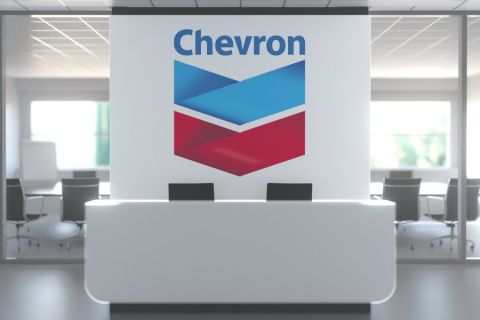
Source: Hart Energy
Consider the U.S. without the oil and gas shale boom. A gaping $548 billion hole would open up in the national economy; roughly 4.3 million jobs would not have existed; and Wisconsin’s cheese industry? Crippled.
Wisconsin isn’t a large producer of oil or gas, but its sand mines provide proppant across the nation. Because of tumbling costs in electricity and natural gas prices, the state has benefited with a large manufacturing base, according to a report by the U.S. Chamber of Commerce’s Institute for 21st Century Energy.
The state’s cheese industry contributes $1.5 billion in direct state GDP and nearly $10 billion in economic ripple effects.
“Without the lower prices created by the energy renaissance, this industry could find it difficult to compete against producers in other states or abroad,” the report, "What If...America's Energy Renaissance Never Actually Happened?" said.
Since 2009, the U.S. has been increasingly linked by the energy industry’s process to coax hydrocarbons from the ground. Electricity and natural gas costs for just poultry processing, and semiconductor manufacturing would have been $3.1 billion without the impacts of hydraulic fracturing, according the chamber’s report.
“Everybody’s in the energy business now as a result of us having this energy renaissance in this country,” said Karen Alderman Harbert, president and CEO of the chamber’s Institute for 21st Century Energy.
Harbert told Hart Energy the chamber is more concerned than before about the way the presidential race is shaping up—so much so that it is releasing its energy plan blueprint now instead of waiting until a new president and Congress are seated.
“I think in previous campaigns, one could say ‘people say anything they want to on the campaign and then they get back to real life once they get into the White House’,” she said. “We’re not convinced of that. I think the mood of the country is such that people are going to be held much more accountable for what they’re saying and want to see some of these things get done.”
While the chamber does not endorse candidates for president, it is clearly concerned by the tone of Hillary Clinton’s stance on energy. Republican Donald Trump has had less to say about energy and his advisers include champions of fracking such as Harold Hamm.
Four years ago, Clinton was in what Harbert called a “very practical moderate middle.” She supported oil and gas exports and even promoted fracking to Europe as a way to rebuff Russia and Vladimir Putin. She also acknowledged gas as a plank to a cleaner economy.
Her primary battles with Sen. Bernie Sanders, D.-Vt., pushed her to the left. In February she said she would “pledge to stop fossil fuels.”
Holding to such a pledge could be critically damaging, Harbert said.
“There’s no doubt that some in the environmental movement are truly, truly advocating for a fossil fuel-free world [and] to ban it on federal lands to begin with,” she said.
With some environmentalists committed solely to solar and wind for electricity generation, the chamber used government figures and an analytics firm to determine what such a policy would have meant at the outset of the shale boom.

Without the energy renaissance:
- Electricity prices would be 31% higher;
- Motor fuels would cost 43% more;
- Residential natural gas prices would be 28% higher;
- Industrial natural gas prices would be 94% higher;
- The industrial sector would have lost about $47 billion in economic opportunity and nearly $25 billion in labor income; and
- The sector also would have lost the equivalent of 387,500 jobs in 2015.
With national security linked to U.S. oil and gas, E&Ps are also wading through onerous regulations more and more often, as “all the above” has increasingly come to mean nothing below. Harbert said the next president will have to address existing rules that are gradually being used to shut out oil, gas, wind and solar energy projects.
“It is quite astonishing that we continue to issue regulations on top of regulations,” Harbert said. “We’ve never cleared out the underbrush of the stuff we don’t need and keep setting the bar higher and higher.”
She said the Environmental Protection Agency has also shifted toward creating regulations in which method, not cost, is the only matter of consideration.
“We have a process that really is opaque and does not take into account a lot of the costs associated with industry to comply with these new regulations,” she said.
Darren Barbee can be reached at dbarbee@hartenergy.com.
Recommended Reading
APA, TotalEnergies Aim for 'New Dawn' in Suriname with Massive GranMorgu Project
2024-10-01 - APA Corp. and TotalEnergies announced a $10.5 billion final investment decision for the GranMorgu project located offshore Suriname in Block 58. First production to come from a 220,000 bbl/d FPSO is slated to flow in 2028.
Chevron Pushing Longer Laterals in Argentina’s Vaca Muerta Shale
2024-09-13 - Chevron Corp., already drilling nearly 2.8-mile laterals at its Loma Campana Field in Argentina, wants to drill even longer horizontals, an executive told Hart Energy.
As Rig Count Slips, Oil Production Keeps Growing
2024-10-22 - Despite the offshore rig market showing signs of demand slippage, oil production looks to be on the rise for the foreseeable future, Westwood analysts say.
Hurricane Helene Shuts in Nearly 30% of GoM Crude Production
2024-09-25 - Bumped up to hurricane classification on Sept. 25, Hurricane Helene has shut in 29% of crude and 17% of natural gas production in the Gulf of Mexico as it nears landfall in Florida tomorrow.
US Oil, Gas Rig Count Unchanged this Week
2024-11-01 - The oil and gas rig count held at 585 to Nov. 1. Baker Hughes said that puts the total rig count down 33 rigs, or 5% below this time last year.
Comments
Add new comment
This conversation is moderated according to Hart Energy community rules. Please read the rules before joining the discussion. If you’re experiencing any technical problems, please contact our customer care team.





